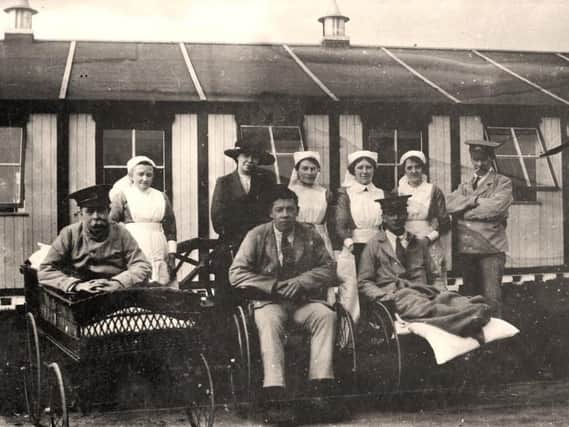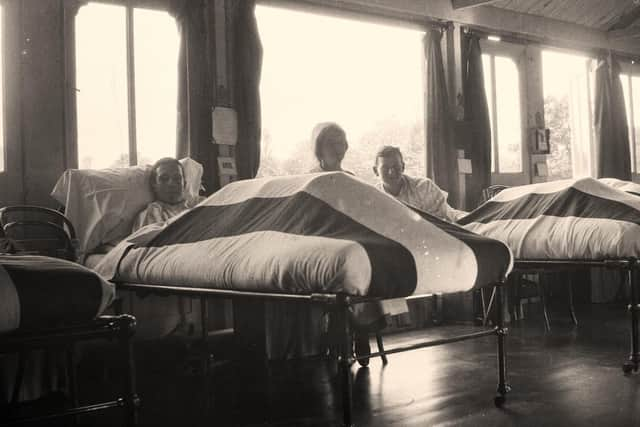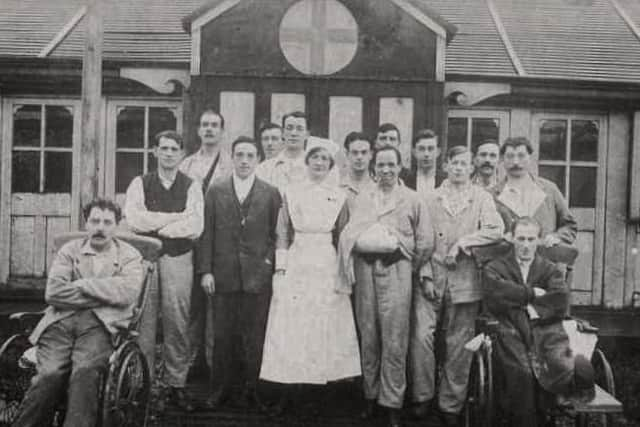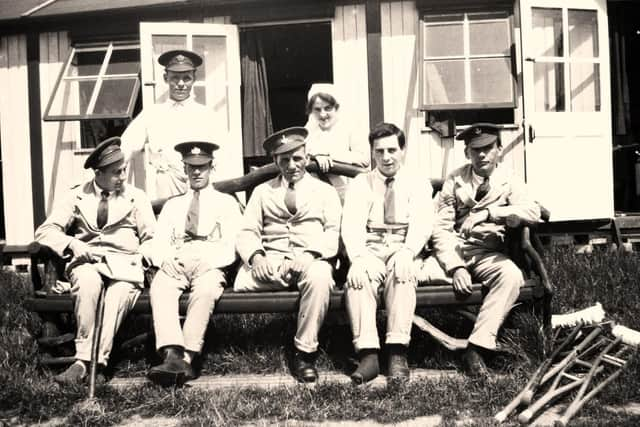Saving Lancashire's victims of war


Hundreds of miles from the horrors of the frontline, Moor Park Military Hospital, in Preston, opened its doors on January 4, 1915.
It was a place for wounded soldiers to be nursed back to health and quickly gained a reputation as one of the leading military hospitals in the UK. The North West was the main centre outside of London for the care and treatment of recovering soldiers returning from fighting on the frontline.
Advertisement
Hide AdAdvertisement
Hide AdThe first hospital building in the corner of Moor Park was a pavilion provided by the Royal Lancashire Agricultural Society which was intended to house 40 patients. But within two years this had been increased to 266 beds and throughout its four years of service the hospital treated 3,218 wounded and traumatised soldiers.


In a twist of fate the rest of Moor Park’s open spaces would be used for training recruits to heard to the Western Front. Every few weeks a new batch of servicemen were transported from Dover or Southampton to Preston railway station and on to Moor Park Hospital.
Casualties would be given initial treatment in France before they were deemed fit enough to head for home to finish their recovery. Injuries would rage from shrapnel and gunshot wounds to frostbite to explosive wounds and even accidents.
Groups of casualties varied in size from a couple of dozen to more than 200 with most arrivals numbering around 70. The men would be divided up between walking wounded and so-called cot cases who were confined to bed. At this time cars were seldom seen on the town’s roads but those tradesmen and private owners who did have vehicles were asked to assist in the transit of men from the station to the hospital. They would leave in convoy through the town’s streets with 27 trains of injured soldiers arriving in Preston throughout the war years.
Advertisement
Hide AdAdvertisement
Hide AdAmong the wounded was a party of 70 casualties from the Battle of the Somme who arrived at the hospital in September 1916. And the Moor Park also welcomed a party of casualties all the way from Salonika.


As the hospital grew, the number of soldiers under the care of the nurses of Moor Park did also, so much so that the War Office put up new buildings on the grounds surrounding Moor Park to accommodate the soldiers.
But this expansion came at a cost and appeals for funds became an almost daily feature on the front page of the Lancashire Daily Post On August 9, 1916 the paper reported, ‘the hospital’s needs are constantly increasing and it is begged the local public will not allow the good work to suffer, from lack of adequate support.’
A wide variety of fund raising events were regularly held around Preston from football matches by the famous Dick, Kerr Ladies team to flag days to church fetes. The staff of Horrockses, Crewdson and Co, cotton manufacturers and spinners, raised money to carry out some of this work while Lord Hollins, chairman of the company, and his wife were patrons of the hospital.


Advertisement
Hide AdAdvertisement
Hide AdIt was not only money the hospital desperately needed. Appeals were also made for walking sticks to help the recovering men back to their feet. One plea read, ‘The appeal of Mrs Howard, matron of the Moor Park Hospital; walking sticks required made of good about sticks of ash and other serviceable wood’.
Despite the serious nature of the work at the hospital great efforts were made to keep the patients entertained. Holiday seasons at Moor Park were always noted as festive times filled with happiness and cheer.
Soldiers would assist sisters in the decking of rooms with decoration and the dressing of the Christmas tree. The soldiers during this time were able to enjoy Christmas dinner with all the trimmings. Those fit enough, competed in billiard competitions and played cards among themselves.
The mood was made as uplifting and peaceful as it could be, for the men who had risked their lives defending the nation’s freedom. It was common for fundraising concerts to be held at the hospital so the soldiers could enjoy the entertainment as they recuperated.
Advertisement
Hide AdAdvertisement
Hide AdLancashire Motor Vehicle Corps would also take the stronger soldiers on drives out to Whitewell as a special treat. With the end of the war in November 1918 the need for the hospital did not immediately end. Even so, within weeks of the armistice it was announced Moor Park was scheduled for closure.
The War Office approved the decision claiming that it was the decision was purely a financial one. It is said in an edition of the newspaper from December 20, 1918 that, ‘with the reduction in the number of patients and the consequent loss of Government grant, the expense of running the institution proportionately increase’.
The staff who worked in the hospital pleaded with the Government to not close the hospital and the letters pages of the Lancashire Daily Post were full of messages of support. Former patients complained those who still needed treatment risked being moved further away from their families. The sisters, nurses and matrons defiantly stood against the closure also vowing to continue to work until their duties were complete.
The appeals failed to save the hospital from its inevitable fate and Moor Park was closed officially on February 1, 1919. However, it continued to treat the wounded for several more months after it had been ‘closed’ with the staff staying true to their word in assisting our heroes injured in the horrors of battle. Some of buildings were used as an open-air school until 1937 when a new school was opened on the same site. While one wooden building was relocated in 1920 to Strand Road to be used as a base for Preston’s Sea Cadets.